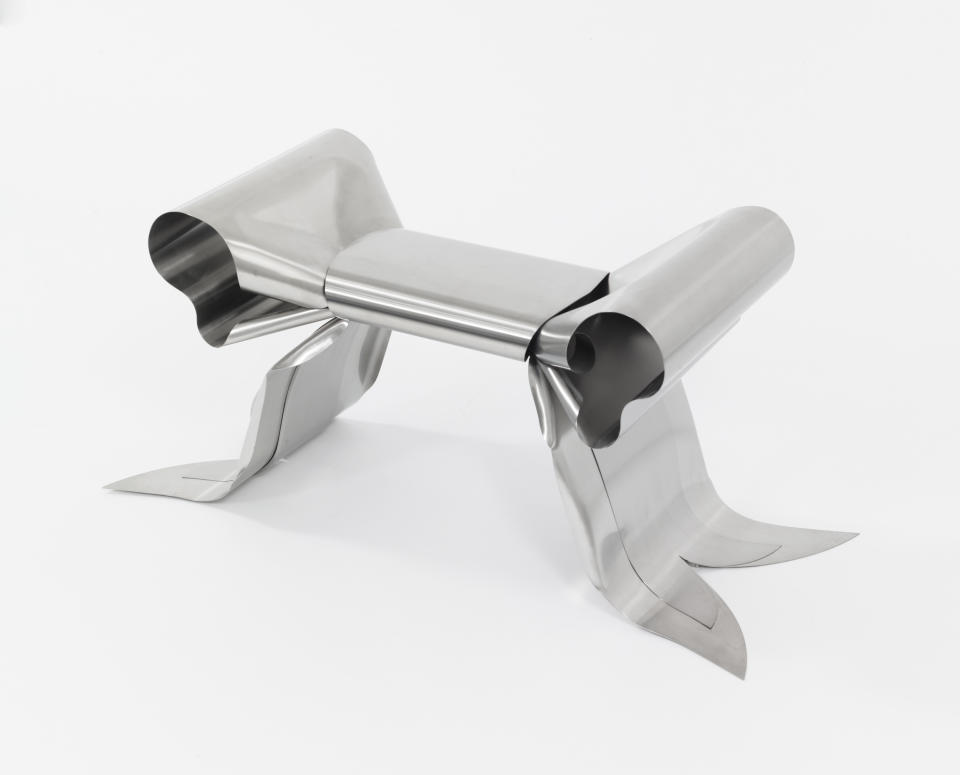Remembering Designer, ‘Captor of Ideas’ Maria Pergay, 93
- Oops!Something went wrong.Please try again later.
- Oops!Something went wrong.Please try again later.

At a time when men dominated the design and furniture industry, Moldova-born designer Maria Pergay made a name for herself by turning one of the most durable alloys of all — steel — into enduringly modern statement pieces.
“Her pioneering use of this material not only became her trademark, but also changed the face of French decoration in the 1970s,” said New York-based gallery Demisch Danant in memoriam.
More from WWD
EXCLUSIVE: 1017 Alyx 9SM Secures Investment From Adrian Cheng
Givenchy's New Book, Celebrating Helmut Newton, Ami's China Push
Leaving behind a rare legacy of female prowess, Pergay died on Oct. 31 at age 93 of natural causes.
The mother of four was born under the rule of Joseph Stalin and started her career in postwar Paris, beautifying boutique windows with her silver creations before producing a complete collection in the late 1950s, and later garnered recognition for her use of stainless steel, particularly her iconic steel Ring Chair from 1968.
Gallerists and design historians Suzanne Demisch and Stephane Danant stumbled upon her work at a Paris flea market in the late ’90s. In 2004, and after more than a decade of collecting Pergay’s works, they finally connected with her and initiated a lifelong bond and collaboration with the designer. They went on to edit “Maria Pergay: Complete Works 1957-2010,” the first comprehensive survey of the designer’s work, tracing the innovations and output of Pergay across time, geography and materials.
Pergay’s work also caught the eye of fashion’s biggest names: Christian Dior, Givenchy, Pierre Cardin and Hermès, which hired her for private commissions and embraced her experimental spirit. She also designed palace interiors for the Saudi royal family, as well as residences and restaurants in Moscow.

“Maria Pergay never belonged to a distinct design movement or group of designers. She was a free-spirited individual, content with indulging in the framework of her own imagination rather than the influences of her contemporaries. When questioned, she refused to be designated solely as an artist, designer or decorator, but described herself as a servant to her own creative impulses, particularly as a ‘captor of ideas,'” Demisch Danant said in a statement published on its website.

Fendi tapped the veteran furniture designer in 2013 to craft three pieces for its Avenue Montaigne flagship in Paris, and reedited five of her iconic designs for its Fendi Casa home furnishings line.
At the time, Silvia Venturini Fendi said Pergay echoed Fendi’s approach to design, in its combination of ancient and futuristic techniques and references.
“I like her aesthetic. She experiments a lot,” Fendi said. “She works with steel, which is a very masculine material, but she makes it feminine and sensual. So she is the perfect person to represent our aesthetic.”
Best of WWD

